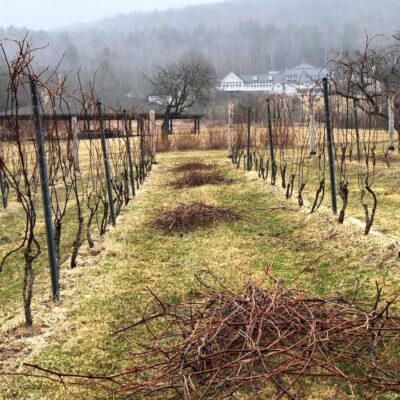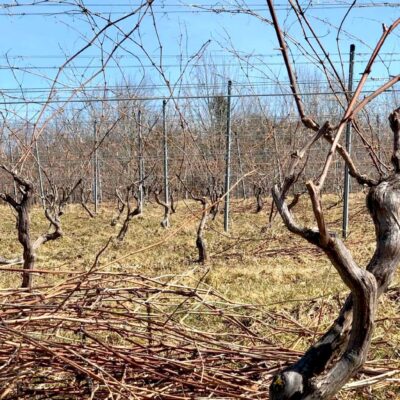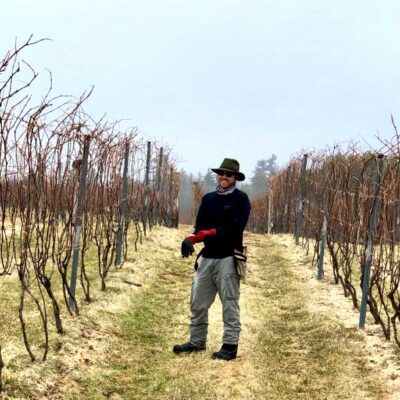With winter’s chill gradually giving way to the promise of spring’s warmth, it’s time for our team to ready the vines for their inevitable resurgence from winter hibernation. And what does this entail? Pruning, the essential practice that sets the stage for future growth.
Why do we prune? Well, think of it as a strategic makeover for our vines. Left to their own devices, they’d go into overdrive, producing more grapes than they could handle. So, pruning isn’t just about aesthetics; it’s about setting the stage for success. Pruning allows us to leave the appropriate number of buds to grow the correct number of shoots for our unique climate.
Maine throws us some curveballs with its short growing season, humid weather teeming with disease pressure and spores that overwinter in the wood, and the looming threat of winter chill. So, we opt for cane pruning, a technique that works well in our conditions. This method involves stripping away much of the old wood, leaving only the essential elements: the trunk, two canes, and two renewal spurs.
The process is both art and science. We start by handpicking the four best canes, carefully tying down the chosen ones, and pruning the others to 2-4 bud spurs, considering the winter damage in each block.
So, as we embark on this annual ritual, we’re not just trimming branches; we’re sculpting the future of our vineyard, one snip at a time.



